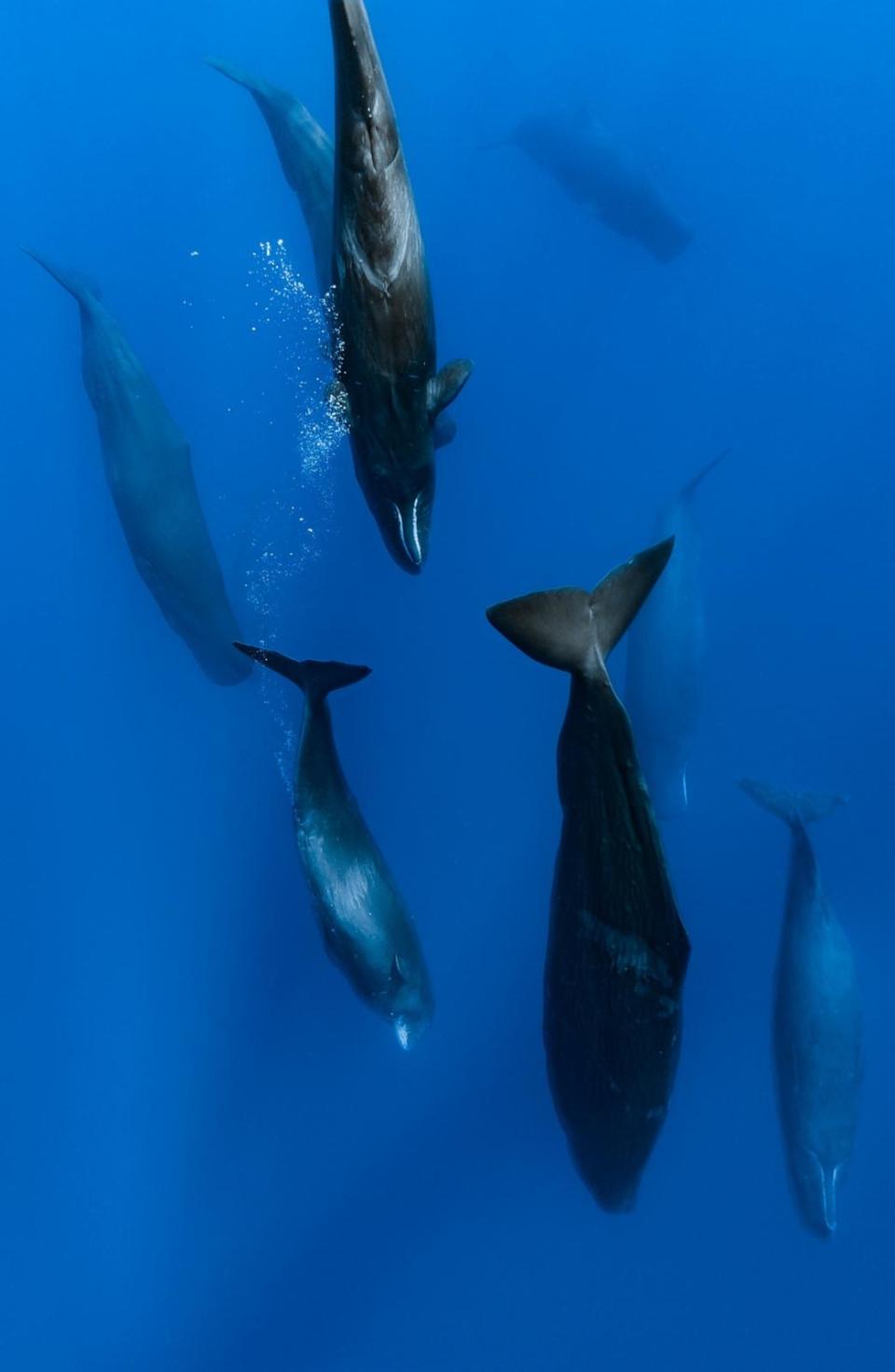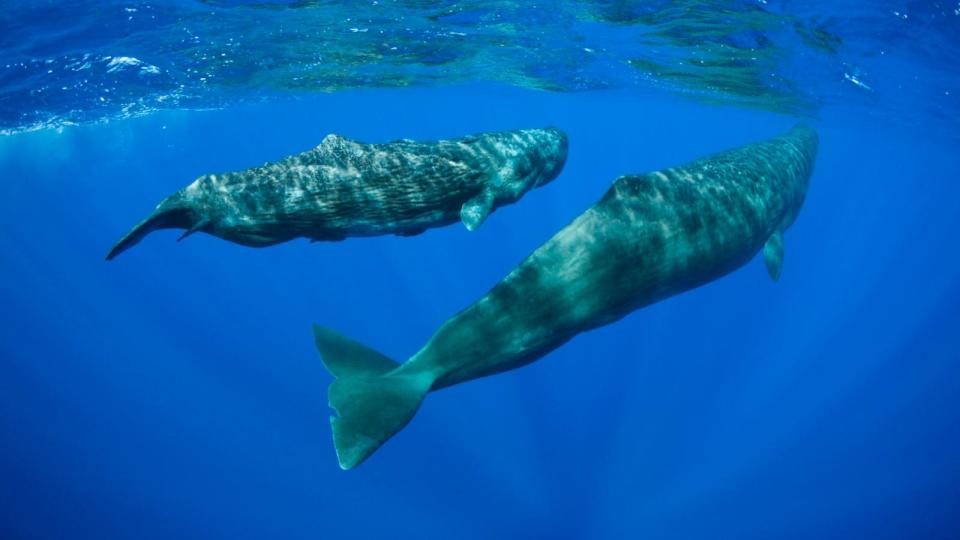Sperm whales communicate through a 'complex phonetic alphabet,' study finds
The ways sperm whales communicate with each other may be more "complex" than scientists previously believed, with new research drawing similarities between the whale species' language and human phonetics.
In a study published Tuesday in Nature Communications, researchers examined a group of sperm whales in the waters surrounding the Caribbean island of Dominica, analyzing their whale calls.
Sperm whales -- which have the largest brains of any animal species on Earth -- can combine and modulate different clicks and rhythms to create complex calls, similar to human language, according to the study, which notes the sequences of clicks sperm whales project are called codas.

The team of researchers behind the study from the Massachusetts Institute of Technology (MIT) contend that sperm whales' codas exhibit complexities deeper than caller identity, however, the information of the calls remains undetermined.
"Sperm whale vocalizations are more expressive and structured than previously believed, and built from a repertoire comprising nearly an order of magnitude more distinguishable codas," the study's authors wrote.
MORE: How scientists discovered 7,000 humpback whale deaths using AI technology: Study
Analyzing the codas of approximately 60 sperm whales through the Dominica Sperm Whale Project, the current largest sperm whale data repository, researchers have determined the building blocks of a "phonetic alphabet" that they believe sperm whales use to communicate.
The researchers analyzed a set of data comprising 8,719 codas, explaining that each coda consists of click groups generally less than two seconds in duration.

Previous research characterized coda collections by examining single codas outside the context in which they were produced, according to the study, however, researchers say "codas are not produced in isolation but in interactive exchanges between two or more chorusing whales."
The interacting choruses of codas led researchers to believe the sperm whales were engaging in a dialog that could be comparable to a human conversation or the transmission of Morse Code.
MORE: 'Incredibly rare' gray whale spotted 200 years after extinction from the Atlantic
"Sperm whale vocalizations demonstrate complexity on two different timescales: a fine-grained time scale that determines the makeup of each individual coda, and a longer time scale that determines the overall structure of the interactive exchange across codas within a chorus," the authors wrote.

"While the communicative function of many codas remains an open question, our results show that the sperm whale communication system is, in principle, capable of representing a large space of possible meanings, using similar mechanisms to those employed by human sound production and representation systems," the authors said.
Sperm whales are deep divers, commonly reaching a depth of 1,150 feet and remaining underwater for an hour or more before returning to the surface to breathe for around ten minutes, according to Britannica.
Sperm whales are the largest of the toothed whales and have one of the widest global distributions of any marine mammal species, according to the National Oceanic and Atmospheric Administration (NOAA), which notes they are found in all deep oceans around the world.
The sperm whale is listed as endangered under the Endangered Species Act and depleted under the Marine Mammal Protection Act, according to NOAA.
Sperm whales communicate through a 'complex phonetic alphabet,' study finds originally appeared on abcnews.go.com

